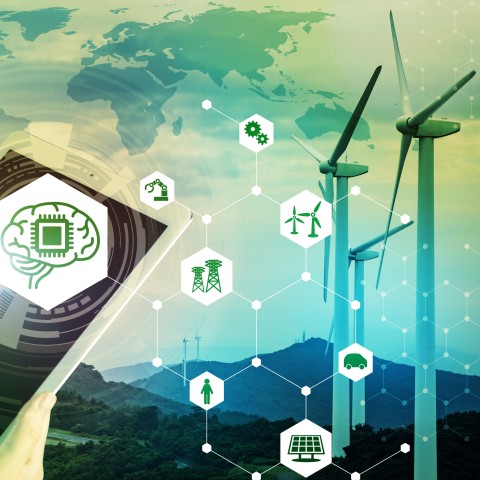Mechatronic and Renewable Energy Systems
The research group „Mechatronic and Renewable Energy Systems“ focuses on system modeling, identification, fault detection, condition monitoring and control of mechatronic and renewable energy systems. Particular interests are efficiency, fault tolerance, intelligence, robustness and reliability oft he considered, self-lerning systems and components. The interdisciplinary expertise of the group merges the engineering disciplines electrical drives, power electronics & mechatronics and the mathematical disciplines control and systems theory.
Recent research projects deal with (i) the modeling and analyses of the future power grid as a four-wire three-phase system (including harmonics, arbitrary faults), (ii) the modeling and control of the electrical components of of electric vehicles, biogas plants, airborne wind energy systems, geothermal power plants, large-scale and small-scale wind turbine systems and wave converters. More details are available on https://lmres.ee.hm.edu/en/.
Laboratories
The Laboratory of Mechatronic and Renewable Energy Systems (LMRES) is located in the following laboratories B0.172 (Research laboratory of ISES), B0.254 und B.0275 (Roomfinder).
Equipment
The equipment of the LMRES is used for teaching and research activities and comprises:
- several different electrical machine types (e.g. doubly-fed induction machines, electrically-excited synchronous machines, permanent-magnet synchronous machines, reluctance synchronous machines and multi-phase machines);
- several different converter types (e.g. two-level and multi-level converters with controlled power switches);
- different grid filter topologies (L, LC, LCL filter) for grid-side connection;
- grid emulator for emulation of grid unsymmetries and faults or harmonic content;
- (galvanically) isolated transformer;
- high-resolution sensors (e.g. current, voltage, torque sensors and encoders);
- dSPACE-/UltraZohm realtime systems for rapid-prototyping;
- standard equipment (u.a. oscilloscopes, multimeter, lab power sources, welding station).
